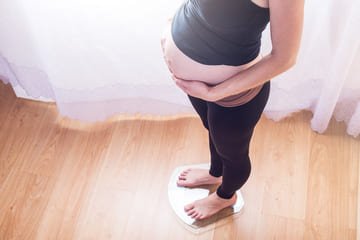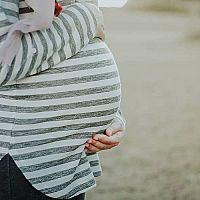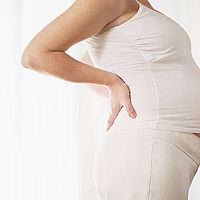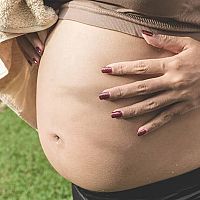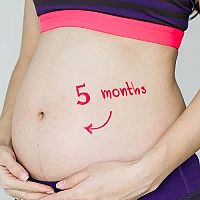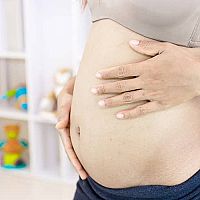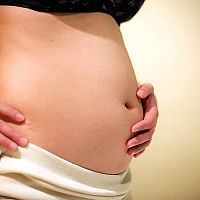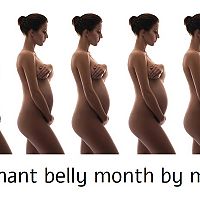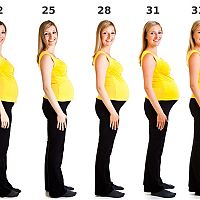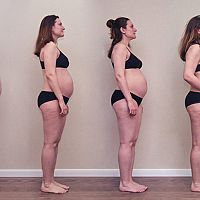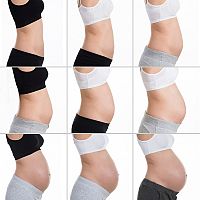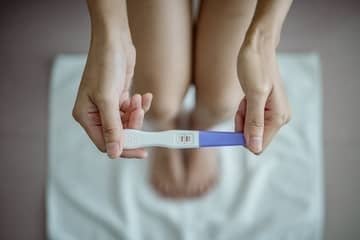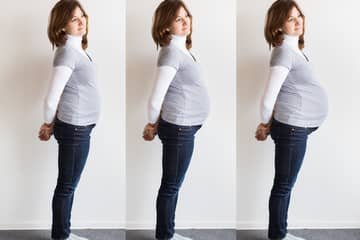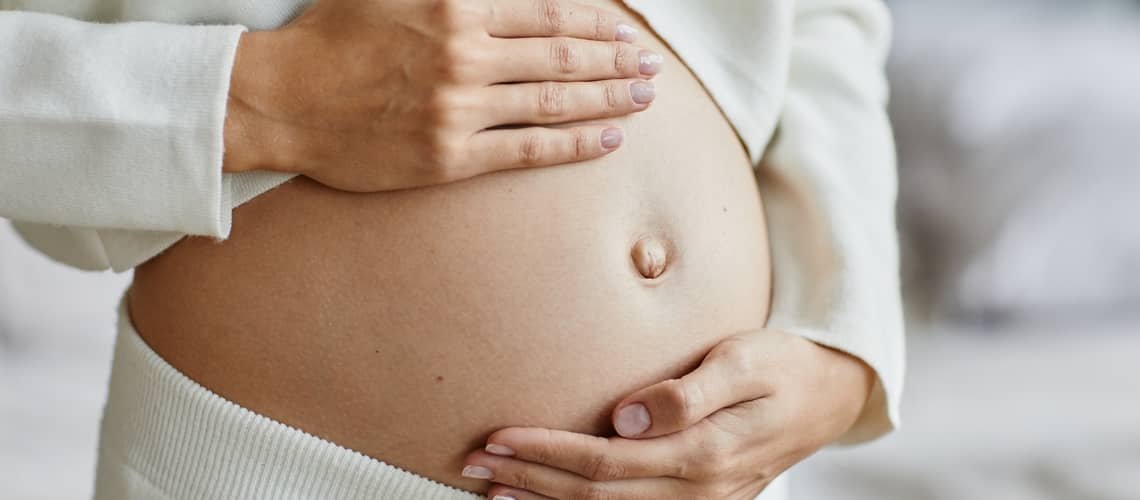
What a pregnant belly looks like?
Although it might seem that recognizing a pregnant belly cannot be a problem for a woman, there are still exceptions. Can a pregnant belly be confused with a fat belly, which is a sign of overweight or obesity? Yes, yes, and know that there is nothing more embarrassing than "flattering" a woman with a bigger belly by remarking what month she is in right now. For most women, a growing pregnant belly is a clear sign that the pregnancy is moving to the next stage. The growth of the belly, its shape and size are very individual for women and each pregnancy is specific.
In the first weeks of pregnancy, the 5th-8th week, when women most often find out that they are pregnant, no growing belly can be observed by sight. Normally, the pregnant belly begins to appear around the 13th-18th week of pregnancy. In slim women, a slightly pregnant belly can be observed even in the 9th to 12th week. Around the 17th to 20th week, the belly should already be visible. In overweight women, it can be visible around the 20th week of pregnancy. The so-called linea nigra, which is a dark pregnancy line on the abdomen that disappears after childbirth. Growth can already be accompanied by feelings of hardening of the abdomen. This can be caused by muscle contractions of the uterus, which grows and adapts to the size of the fetus. This can also affect a woman's digestion, and urges to urinate appear earlier, resulting in pressure on the bladder.
From the 20th week, women may also experience false contractions - messengers. The first movements of the baby in the abdomen can also be felt around the 20th-22nd week of pregnancy. However, there are exceptions, in which mothers who have already given birth can indicate movements in the abdomen even earlier, for example from the 16th week of pregnancy. For first-time mothers, it can be more difficult to distinguish whether it is a digestive activity.
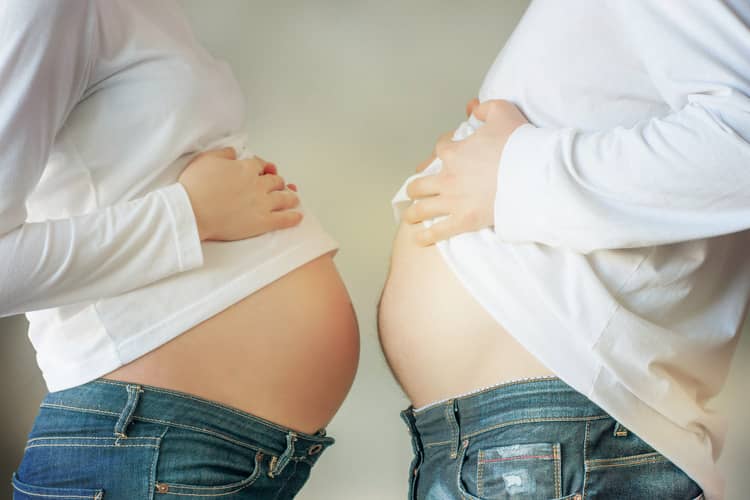
The growing uterus between the 21st and 28th week pushes the stomach up and creates more pressure on the pelvic floor. Blood flow increases, which can cause constipation, heartburn, and stretch marks can appear due to a faster growing belly. A smaller stomach means that you get full faster, but you need to eat more often. The size of the belly depends on many factors, but sleep problems and back pain can start to appear.
As the weeks go by, the belly gets bigger, around the 30th week, the uterus begins to press on the lungs, which causes shortness of breath and more complicated movements. In the 7th month, the belly seems to inflate and, depending on the shape, it may drop slightly downwards. During this period, the child grows intensively and the belly grows faster. Some symptoms intensify, such as heartburn, pain in the legs, spine, and the movements of the baby, which is looking for the right position in the womb, can also become more intense.
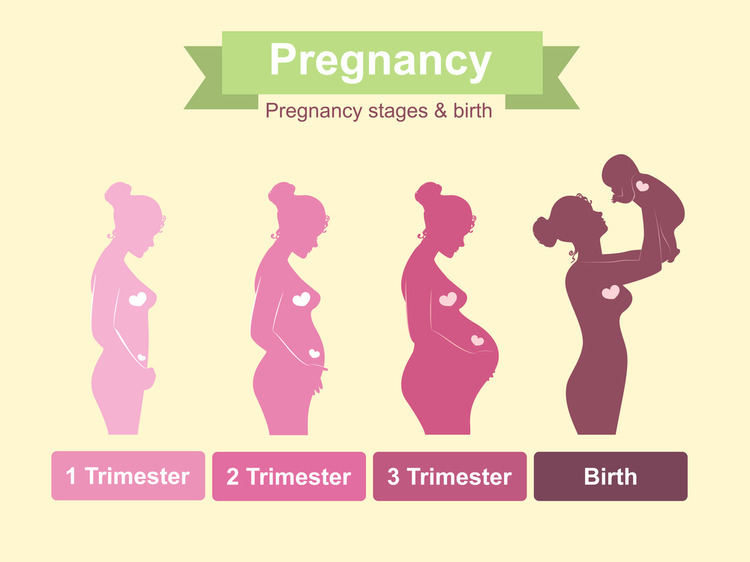
Around the 36th week, the baby should be turned into the birth position with the head down. In the last 9 months, the baby begins to push towards the birth canal. The pressure in the abdomen is noticeable, the navel is pushed outwards, digestion tends to be more complicated and movement can be significantly more strenuous. In some cases, the baby's movements are more intense, while in others the baby is very calm.
How to tell the difference between a pregnant belly and a fat belly? It should seem very easy to tell the difference between a pregnant belly and a fat belly. The problem occurs primarily in women who are overweight or with a certain stage of obesity. Weight gain in slim women is usually higher than in overweight or obese women. The visual perception of the increase in the pregnant belly in firmer women is complicated by a layer of fat. It also causes such a pregnant woman not to perceive the movements of the baby or the contractions of the uterus. Although it seems like nonsense, there are also known cases when a woman did not recognize her pregnancy. Obesity, irregular menstruation, irregular sexual intercourse, ambiguous symptoms or other factors can cause a woman not to perceive pregnancy as a possibility and to find out about it only at an advanced stage of pregnancy.
Due to the intra-abdominal pressure, the pregnant belly should be firmer to the touch with a smaller layer of fat, but this also depends on the woman's body structure and current condition. The fat belly is soft and flabby to the touch. In pregnancy, its increase can only be observed in the advanced phase of pregnancy.
Gallery
Pridať komentár


